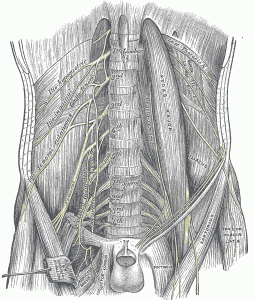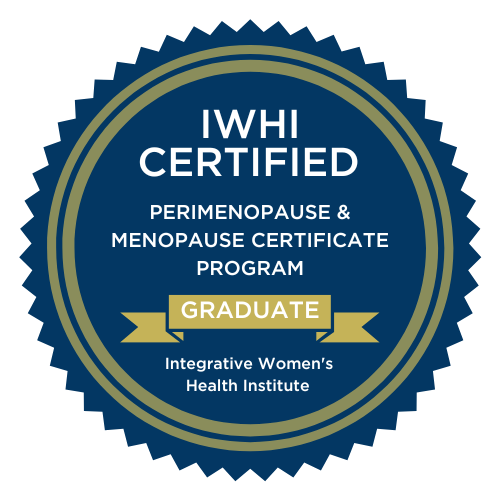The psoas are deep muscles that run down the body on a diagonal from thoracic vertebrae 12 through the pelvis and then to the inside of the upper femur. We actually have two psoa, one on each side of the spine Technically the correct term when referring to both psoa is psoai, not psoas. I’m going to use the term psoas throughout the article to keep it simple since that’s what most people call it. The psoas connects to 22 different structures in your body, mostly to the vertebra and vertebral discs! The psoas has caused pain in my back, abdomen and even my thigh and knee on occasion. My psoas was shortened due to past trauma, poor alignment and years of sitting all day in school. Read my article Psoai am I.
The lumbar plexus, a network of intersecting nerves and vessels, runs through the layers of the psoas, so when the psoas is shortened it can affect the pelvic floor, legs, low back, spine, abdomen, internal organs, and the diaphragm. It can even contribute to ovulation discomfort and nerve pain that runs down into the knee. The ovaries, which can double in size during ovulation, sit very close to the psoas especially when the uterus is tipped back and the psoas is already shortened, this can irritate and the genitofemoral nerve (see image below) causing pain in the thigh and knee.

Emotions affect the psoas as well. The psoas fires under the fight or flight response. We either curl into a ball or flee under this stress response, both of which require the psoas to fire into action. Imagine being under chronic stress where you can’t flee (deadlines, traffic, negative emails, etc.), the psoas is still receiving the signals to run away or kick someone’s ass, but of course, we don’t follow through. The result is chronically shortened muscles and a frayed nervous system.
There are psoai releases that are extremely helpful (see suggestion below), but 30 minutes or even two hours of releases every day does not undo the other 12 hours of 90-degree hip flexion, rib thrusting, poor pelvic alignment, and chronic stress. Your body will remember whatever position you hold it in the longest.
Getting started:
1. Transition into wearing flexible flat shoes.
2. Reduce caffeine intake (and Bruce Willis films). Both of which stimulate the sympathetic nervous system.
3. Reciprocal arm swing- let your arms swing naturally while you walk if you aren’t carrying a something. Women tend to hold their arms close to their bodies or keep their hands in their pockets while walking. The reciprocal arm swing keeps your torso steady so your psoas doesn’t have to twist your spine with every step.
4. Get a dynamic workstation if possible. And vary your position throughout the day.
5. Back your ass up and stop using your psoai as a seatbelt.
7. No one area works in isolation, that goes for the psoas as well. That’s why it’s important to take a whole-body approach.









That is so interesting! I used to always get cramps in my thighs during menstruation. I never knew why and no one I talked to could ever relate to it so I just figured I was a freak, took some Advil, and moved on with my life. I don’t have this kind of pain anymore, thankfully. I do, however, still have a tight psoas and I’m a recovering rib thruster and pelvis tucker. Thanks for the tips to help me on the road to a happier psoas 🙂
Beautiful! I just love that dynamic psoas! Your information on the relationship of the ovaries to the psoas was especially delightful and I am having loads of fun with the bowl of soup in my pelvis.:)
Thank you for this. I realize that I’m posting to an old article but I thought I’d give it a whirl,
For about 5 yrs I’ve been off & on suffering low back pain that coincides with specific SI joint type pains like something is “stuck” , hip pain , and deep pelvic pains and pressure. At first I thought it was brought on by an ovarian cyst with enlarged ovary but not sure years later as never confirmed by and doctor.
A couple times had sudden bad muscle spasms that I couldn’t move an inch. I couldn’t walk/step, bend, turn, or sit. Basically frozen in place.
I’ve had x-rays and no herniated or bulging disks.
The only stretch that has given me any release feeling is a standing stretch where one leg is straight, foot is on the floor toes forward……and other leg is externally rotated , straight, and foot elevated on low counter. And I softly reach out to my toes on counter. I still wonder why this is so.